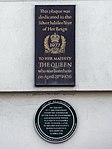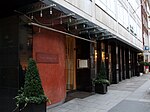The Exhibition of Australian Art in London was a show organised by the trustees of the Art Gallery of New South Wales (AGNSW), notably Julian Ashton, and financially supported by the philanthropist Eadith Walker. Held at London's Grafton Galleries between April and September 1898, it featured 371 artworks made in Australia by 114 artists, and was the first major exhibition of Australian art to occur internationally.
The exhibition focused almost exclusively on art from the previous ten years, a time of intense patriotic feeling in Britain's Australian colonies, which were then on the cusp of federating to form the Commonwealth of Australia. By staging the exhibition in London, the capital of the British Empire, the organisers sought to promote the idea of an emerging Australian tradition in Western art, and to depict the maturity of Australia as an embryonic nation. Some Australians also felt that local artists, compared to local writers, had hitherto been overlooked in Britain, and, as the Grafton Galleries catalogue highlighted, it was time to showcase a collection of works "for the judgement of connoisseurs outside of Australia."In order to build a "representative" collection, the AGNSW trustees sought submissions from artists throughout the colonies. However, the final selection of works received criticism for evidencing a bias toward New South Wales artists, and several organisers, including Ashton, himself a prominent artist and taste-maker, were accused of self-promotion. Despite these controversies, the exhibition won considerable, if unanticipated, critical acclaim in Britain, and such was the show's popularity that Grafton Galleries kept it open for four months past the original closing date. It remains the largest exhibition of Australian art in Britain, and is also notable for its near equal representation of women artists, a far higher percentage than any other show of its kind.







